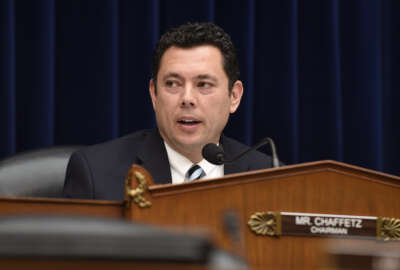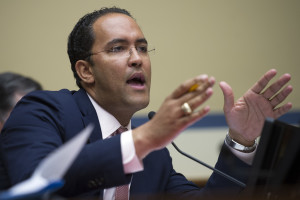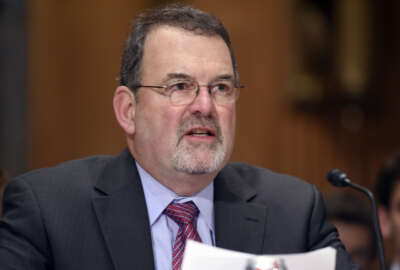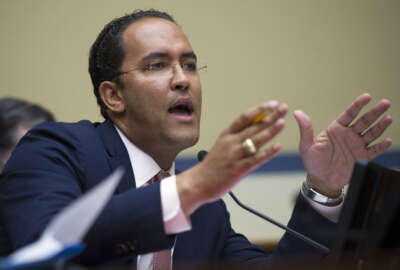
Rep. Hurd answers OMB’s IT challenge, proposes alternative strategy
Lawmakers are offering the Modernizing Obsolete and Vulnerable Enterprise IT (MOVE-IT) Act as an alternative to the White House’s $3.1 billion IT Modernization...
Federal Chief Information Officer Tony Scott got his wish — an alternative to the administration’s idea for how to modernize federal IT systems.
Scott has said many times, including on July 14, that moving off legacy IT systems across the government is a crisis and the administration’s proposal to create a $3.1 billion IT Modernization Fund to do that is the best option.
“I’d ask any of the people in Congress, if you have a better idea get it out there, but if not get on board with this one,” Scott said at the Palo Alto Networks federal forum in Washington. “You can’t sit around and look at your navel and figure it out two-to-three years from now. It’s one of the things that doesn’t get better with age. We need to get on with the business of upgrading and modernizing and do it with vigor.”
Less than an hour after Scott made the call for an alternative to the ITMF, Reps. Will Hurd (R-Texas), chairman of the Oversight and Government Reform Subcommittee on IT, and Gerry Connolly (D-Va.) and Sens. Jerry Moran (R-Kan.) and Tom Udall (D-N.M.) — both members of the Commerce and Appropriations committees — stepped up to the challenge by introducing the Modernizing Obsolete and Vulnerable Enterprise IT (MOVE-IT) Act in their respective chambers of Congress on July 14.
Under the companion bills, Hurd, Connolly, Moran and Udall would take a different approach than the one offered up by the White House and introduced in Congress by Rep. Steny Hoyer (D-Md.).
Instead of a centralized IT fund managed by the General Services Administration, the MOVE-IT Act would create working capital funds for IT in every agency by letting CIOs and other executives reprogram money intended to support older IT systems, use discretionary appropriations and transfer authority approved under law to fund legacy systems modernization efforts.

Hurd said the concept of an IT modernization fund makes sense, but the debate is how best to ensure the government is continually evolving.
“I think the way we can do that is by making sure our professionals within the agencies are able to realize the savings they get. A perfect example, we had a hearing recently just two agencies realized $2 billion in savings by transitioning into the cloud. That’s real money. That’s only two out of 24 CFO Act agencies,” Hurd said at the conference. “The problem is because of the size and scope of many of these projects, the agencies aren’t able to realize these savings in the calendar year. So let’s take that savings that’s realized and put them into a working capital fund and give you the ability to use that money over three years in order to modernize your IT systems.”
The idea in Hurd’s substitute to the ITMF isn’t new.
It’s probably one Scott even thought of, but he has said several times over the last few months that while OMB likes the concept of taking advantage of savings drawn from moving off of legacy systems, it’s not a short term answer to a long-standing problem.
Chat with Jonathan Alboum, USDA CIO, July 26 at 2 p.m. Sign up here.
“My plea is to all our friends in Congress is don’t make us go around and tin cup. We need to make progress on this. We need to get the investment cycle going,” he said. “I have direct experience with this at a number of companies and I know for a fact that when you start a regular upgrade practice it can be self-sustaining for a long time. It’s like riding a wave, once you get on a wave you can pick up energy and accelerate along the way. But we need to get the clock started.”
The biggest difference between the MOVE-IT Act and the ITMF is the need for up-front funding of $3.1 billion. Hurd said in an interview with Federal News Radio that upfront money is a big hurdle.
“Some of the concerns folks have is are the agencies actually going to pay back the money they get from this modernization fund and I think people are suspicious of that. So this is a different way,” Hurd said. “I think the basic concepts of these two bills are the same, and I think we can figure out a solution to this problem everybody can get behind.”
Hurd said he’s heard OMB’s thoughts on using savings to fund modernization efforts, but he believes it’s more about the strategy an agency uses.
“If you don’t already have a plan on how to make some of these changes in your infrastructure, then guess what, you don’t have a plan on how to introduce new technology today anyways. So part of this is the problems that we’ve seen is the lack of leadership in some of these agencies to have the right plans on how you will evolve constantly overtime,” he said. “We are refining where the discussions need to be. The good news is there is an appetite to get this done. This is not really a partisan issue. So I think this is a discussion point where we can move people to closure by the end of the year.”
But the MOVE-IT Act wouldn’t require such a plan from agencies. So some question whether giving agencies money would create more siloes on top of the legacy systems that already exist.
Scott said in June at the Brocade Federal Forum that instead of the old approach of “piecemealing” money out to every agency, the ITMF is asking agencies to develop individual or shared plans, or business cases, to describe how they would modernize their networks and applications.
“We will look at those and we will fund the upgrade or replacement of applications, infrastructure and so on,” Scott said. “But we are going to one other thing that is a little unusual, we will ask you to pay back the fund. How are you going to do that? I guarantee you there is enough money in that inefficient, ineffective infrastructure and application space that paying back will not be a problem from a financial perspective.”
Two approaches to modernizing IT
Which brings us to the main differences in approaches: centralization versus decentralization.
“I obviously am on the decentralized side because you can have 24 different experiments on how to do things because you have so many different environments,” Hurd said. “But this isn’t against the idea of having shared services. We should have shared services across the federal government. When you have a centralized fund, you can maybe make the opportunity for shared services easier. But I don’t think this is an ‘or’ issue, I think this is an ‘and’ issue where you give agencies flexibility but also how do you pursue shared services at the same time.”
Scott said the dialogue with Congress around the ITMF continues, though he didn’t comment on the MOVE-IT Act because it wasn’t introduced until after he spoke at the Palo Alto Networks event.
“There are good ideas coming forth all the time and we need to continue the conversation,” he said.
Reaction to the bill, as expected, has been positive.
“The MOVE-IT Act is a critical step forward in the ongoing debate about how best to incentivize agencies to move off legacy IT. This proposal, and the IT modernization proposal introduced by Rep. Hoyer are a critical starting point in a needed discussion,” said Mike Hettinger, a former House staff member and now managing principal of Hettinger Strategy Group. “The simultaneous introduction of bipartisan, bicameral legislation doesn’t happen every day in Congress and the sponsors of the legislation are to be commended. I look to working with them when Congress returns after Labor Day.”
Rich Beutel, who was the driving force behind the Federal IT Acquisition Reform Act (FITARA), which at one point in the development process included similar provisions to the MOVE-IT Act, said the implementation of safer, modernized IT systems would solve long-standing problems.
“Flexible spending authorities are a key enabler of IT modernization,” he said. “When combined with the concepts advanced by the IT Modernization Fund proposal from this administration, significant obstacles to a new era in digital government can be overcome. We look forward to working with the administration and the federal CIO in advancing and accelerating cloud deployments.”
Industry associations and contractors also reacted with optimism.
The IT Alliance for Public Sector and the Professional Services Council both came out in support of the MOVE-IT Act.
ITAPS wrote letters to the bills’ sponsors in a show of support for the MOVE-IT Act.
Senior Vice President for Public Sector Trey Hodgkins said, “This bill creates an opportunity for agencies to effectively fund their IT needs for cloud computing, IT modernization, cybersecurity and future IT development.”
Tony Celeste, senior director of federal at Brocade, said the MOVE-IT Act is part of the ongoing discussion about transitioning agencies to a modern IT infrastructure.
“This legislation complements the priorities of government leaders who are driving IT progress and enabling digital transformation. These efforts are vital for agencies to reduce maintenance spending, bolster security, improve IT effectiveness and better serve citizens, warfighters and veterans,” Celeste said.
Doug Bourgeois, a principal with Deloitte Consulting and previously, executive director of the Department of Interior’s National Business Center, said that IT spending flexibility is key to transitioning to the cloud and other modern technologies.
So now we have two competing proposals, each with their own merits and supporters. The question is whether the White House and its allies can work with Hurd and his supporters to find a compromise to finally address a problem now going into its third administration, or will this idea die under its own weight and be left to that third administration to tackle?
Copyright © 2025 Federal News Network. All rights reserved. This website is not intended for users located within the European Economic Area.
Jason Miller is executive editor of Federal News Network and directs news coverage on the people, policy and programs of the federal government.
Follow @jmillerWFED





